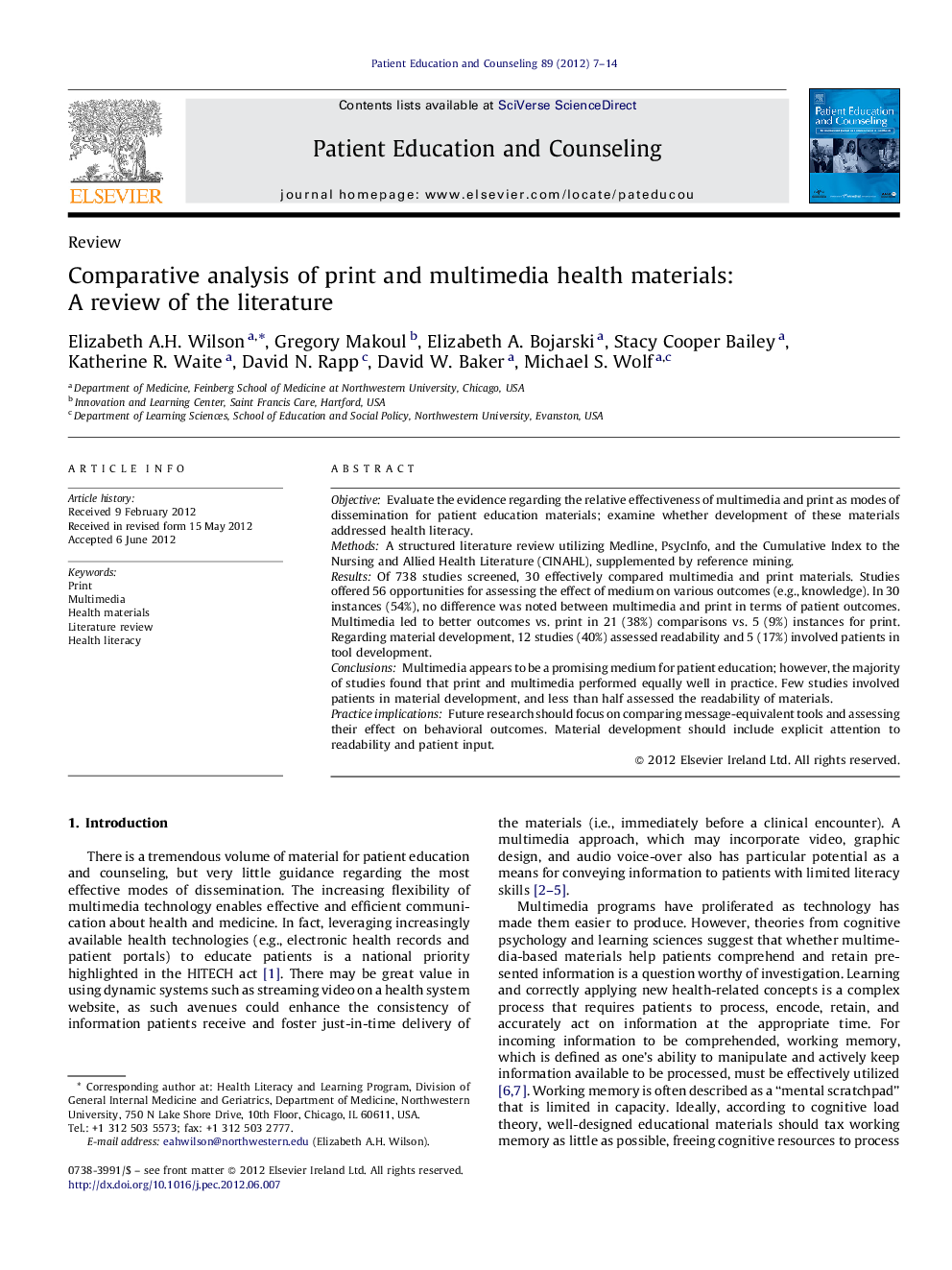| Article ID | Journal | Published Year | Pages | File Type |
|---|---|---|---|---|
| 6153229 | Patient Education and Counseling | 2012 | 8 Pages |
ObjectiveEvaluate the evidence regarding the relative effectiveness of multimedia and print as modes of dissemination for patient education materials; examine whether development of these materials addressed health literacy.MethodsA structured literature review utilizing Medline, PsycInfo, and the Cumulative Index to the Nursing and Allied Health Literature (CINAHL), supplemented by reference mining.ResultsOf 738 studies screened, 30 effectively compared multimedia and print materials. Studies offered 56 opportunities for assessing the effect of medium on various outcomes (e.g., knowledge). In 30 instances (54%), no difference was noted between multimedia and print in terms of patient outcomes. Multimedia led to better outcomes vs. print in 21 (38%) comparisons vs. 5 (9%) instances for print. Regarding material development, 12 studies (40%) assessed readability and 5 (17%) involved patients in tool development.ConclusionsMultimedia appears to be a promising medium for patient education; however, the majority of studies found that print and multimedia performed equally well in practice. Few studies involved patients in material development, and less than half assessed the readability of materials.Practice implicationsFuture research should focus on comparing message-equivalent tools and assessing their effect on behavioral outcomes. Material development should include explicit attention to readability and patient input.
